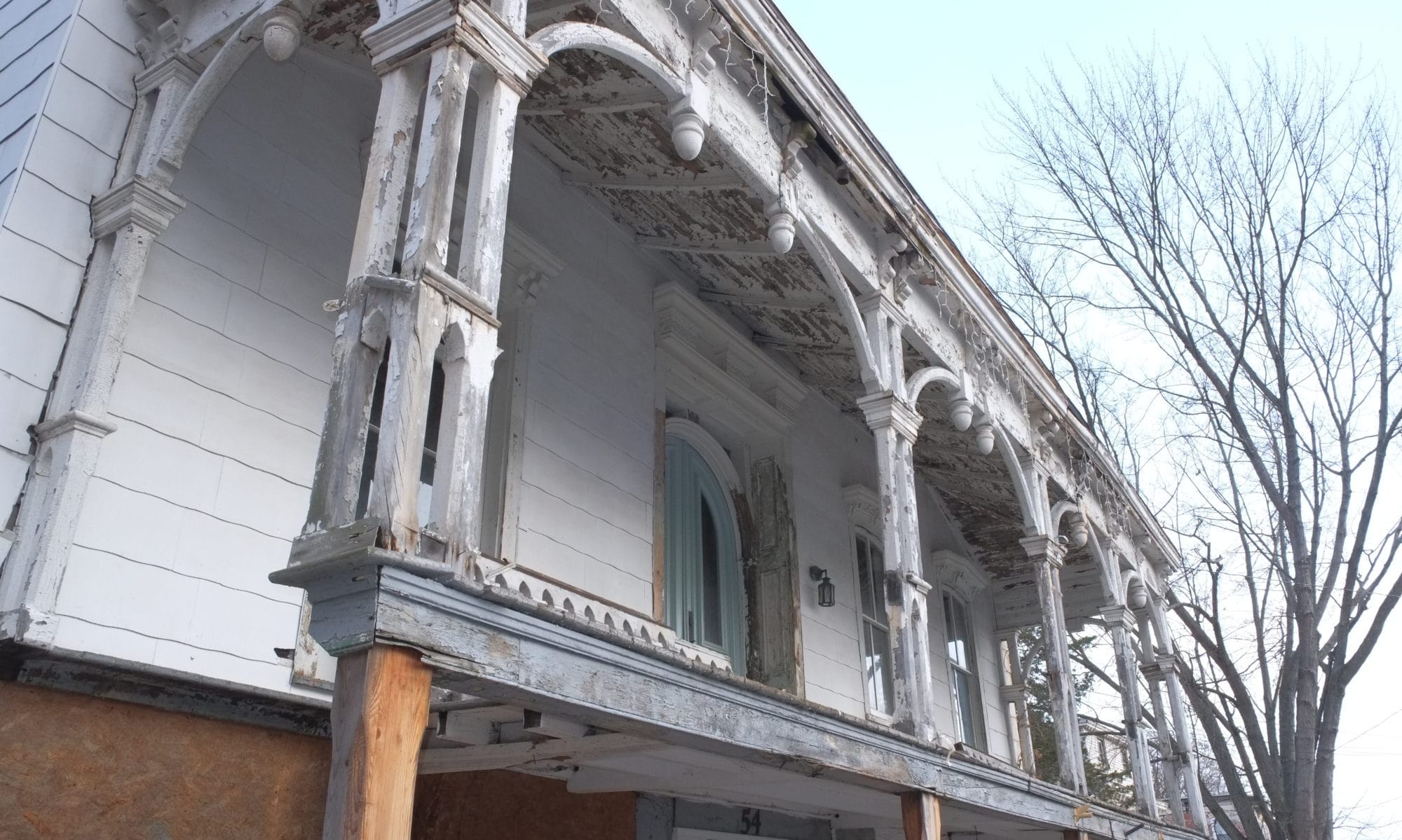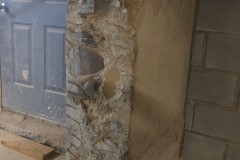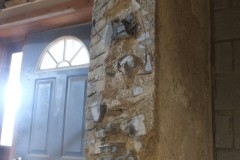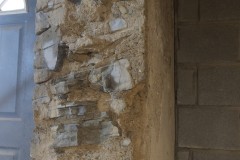It seems a good idea that we fix our doorways before we parge/plaster the interior walls. The doorways are pretty uneven so we added some shuttering and slowly filled up behind with lime mortar mixed with a bit of fiberglass and as many stones that we could fit in. You can see Aimee hammering in the mortar to reduce voids.
Progress is a bit slow but at least we’ll have a pretty square opening for a door to be installed. This door is to the bedroom and we had the builders cut this opening in the wall for us. The second doorway we need to fix is to the boiler room and for this we plan to have an arch, how fancy is that and the arch should be a fun project. The reason for the netting is that the masonry above the door is extremely fragile and if it fell on you it would likely kill you.
We did have a plastering fail yesterday. I removed the shuttering and 90% of the plaster came away from the wall. Not sure what went wrong there but it could have been any combination of the following:
- Messed up the ratio of the mix
- Didn’t mix for long enough
- Removed the shuttering too soon
- Mix was too dry
- Didn’t pack in in well enough
We’ll probably never know why but I suspect a combination of all of the above with the possible exception of (5).
Thanks again Joe and Deborah for the loan of your cement mixer.




Wet it down well. It will only stick to a wet substrate. Up the lime content to a 1 part to 2.5 part sand. Wait three days minimum. It should be fine then.
Thanks Derrick and we did spray it down at least an hour before. Mixture was as you stated 1 : 2.5 and we mixed it for at least 20 minutes. I can only think that we messed up the ratio as we did run out of sand during this mix and had to get extra. Thanks for your input, you’ve been our guide throughout this process. Sorry we missed you at the bbq but look forward to hearing your tails of Iceland. We miss you!!!
Then it retarded set due to the enclosure by wood, I’d guess. Though I’ve learned that the only constant i n the lime process is a lack of completely predictable behavior with the material. One thing you may consider is making a true square nailer out of wood, Tapcon it in place, and run your mortar to it locking it in place, remove bottom piece and then you have a great attachment point for a door frame and the door. This is the old Dutch method. The mortared right to the structural element. Great with lime, bad with Portland.
Ah interesting I bet you’re correct about it not setting because of the enclosure as lime needs CO2 to set I believe. Good idea about adding a square mould to the bottom and top, that would have worked and good to know. We re-did the messed up lime and second time around it seems to have worked 🙂